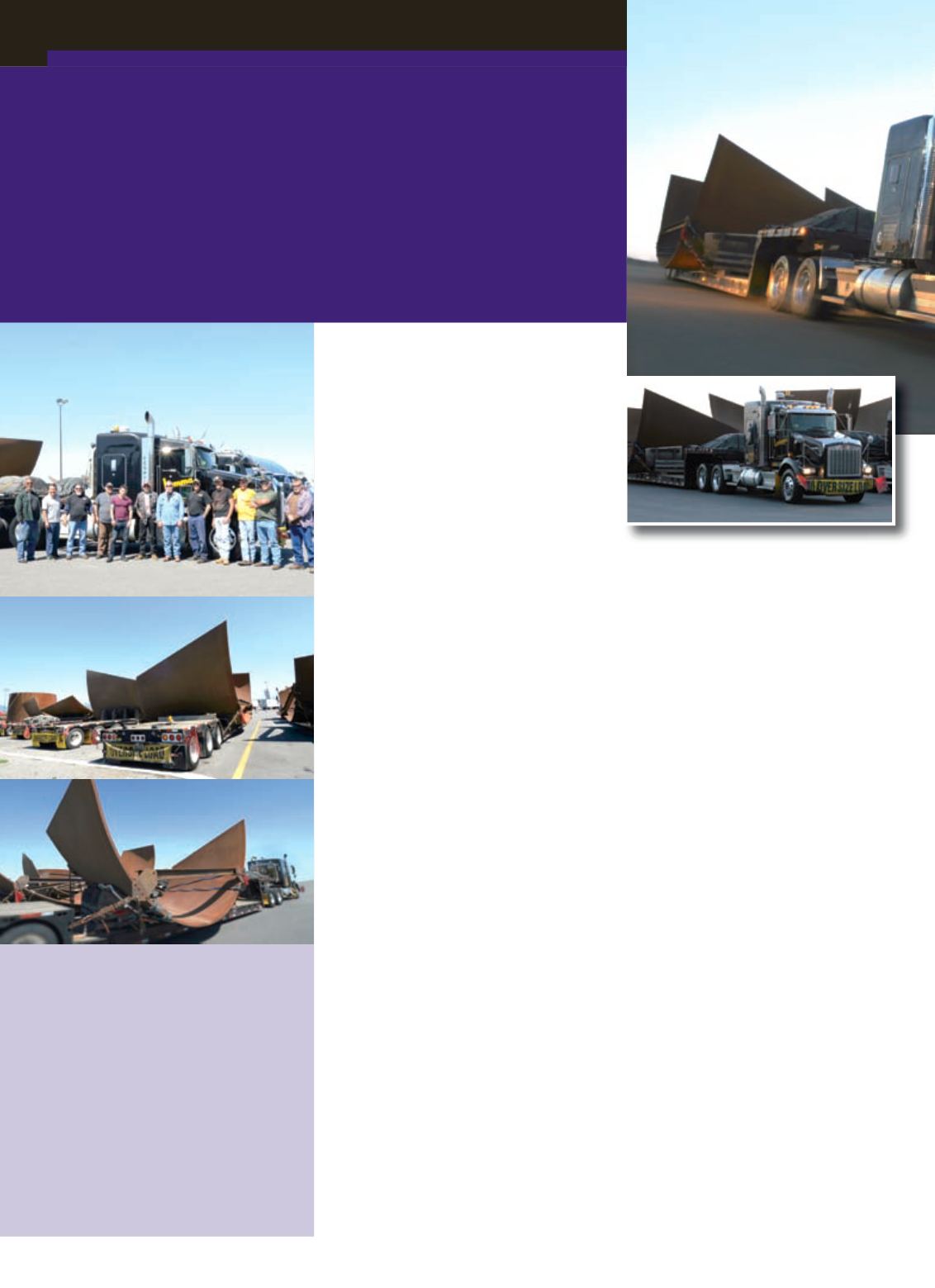
44
SITE REPORT
TRANSPORT
ACT
AUGUST 2013
Hauling a multi-million dollar sculpture across the
country required extreme planning and caused
permitting headaches.
T
he cross-country haul of a huge,
multi-million dollar sculpture
known as “Cycle” was a super
load adventure that spanned 4,000 miles.
J.F. Lomma Rigging and Specialized
Services performed the project that
involved 12 loads which started in
Bayonne, NJ and culminated on a private
island off the coast of Seattle, WA. The
sculpture pieces were trucked from New
Jersey to Seattle and then barged to the
island.
“They were all oversized loads,” explains
Dave Pursley, project manager for J.F.
Lomma, based in South Kearny, NJ. “The
largest pieces weighed close to 58,000
pounds. Some were in the weight range of
48,000 pounds and the lightest was about
43,000 pounds.”
For the larger pieces, the dimensions of
the load were 15-feet, 4-inches tall and
up to 15-feet, 10-inches wide and 78-feet
long.
Beyond the value and delicate nature of
the sculpture pieces, the route was quite
the challenge. Normally the trip from
New Jersey to Seattle would be about
3,000 miles. But due to the nature of the
permitting and the need to circumvent
construction and roadways not approved
for the super load, the trip swelled to
4,000 miles, Pursley says.
“It was a circuitous route due to roadway
construction and width, height and
weight problems,” he says. “We sometimes
had to travel into states we didn’t want to
pass through to get to where we needed
to go.”
Routing issues started right off the bat,
due to highway and bridge construction
obstacles. The route plan involved a
more southerly route and included
Pennsylvania, Maryland, West Virginia,
Kentucky, Illinois, Indiana, Iowa, South
Dakota, Montana, Idaho and into
Washington.
“In West Virginia we had to take a lot
of detours and back roads,” says Pursley.
“It took a day-and-a-half to get through
West Virginia alone. We were required to
have four private escorts per load in West
Virginia. For the rest of the trip we just
needed front and rear escorts.”
Weather issues
Winter weather was an issue in South
Dakota, Montana and Idaho, with falling
snow delaying travel.
“We got delayed with restrictions and
had to wait a day for roads to clear in
South Dakota,” Pursley says.
As they got into the city of Seattle,
construction work caused further delays.
“The route we needed to take was under
construction so they would allow us to
only run on Fridays, and it had to be
during the evenings,” says Pursley. “Plus
we had to have more escorts, too.”
Despite the obstacles, the loads made it
to the holding yard four days earlier than
required. The arrival dates were critical
due to the barge and crane only being
there on certain days. The crane used to
off-load the trailers and load the barges
was a Manitowoc Model 4100.
“We had two critical delivery dates
and all hell would have broken out if we
weren’t there as far as bringing the barges
into the slip to pick up the pieces,” he says.
While the security and safety of the
crew and then the sculpture pieces were
of utmost concern, Pursley says the most
arduous effort was the permitting.
About the
sculpture
Named “Cycle,” the sculpture was created
by Richard Serra. Serra is an American
minimalist sculptor and video artist
known for working with sheet metal. The
sculpture was erected on a private island
in the Puget Sound.
None of the metal sculpture pieces were
the same, and rigging required creativity
to assure the pieces were secure and
wouldn’t be damaged.
Many of the sculpture
pieces were gigantic
arches.
Artsy haul
For the largest pieces, the dimensions of
the load were 15-feet, 4-inches high and
up to 15-feet, 10-inches wide and 78-feet
long.
The crew members who made the haul
to Seattle were proud to get to their
destination ahead of schedule, despite all
the obstacles.


